JohnQuixote
Ideal_Rock
- Joined
- Sep 9, 2004
- Messages
- 5,212
It may be helpful to illustrate an effect that can influence the physical symmetry of any round brilliant, and acute precision in Hearts & Arrows cuts.
Brian Gavin terms the effect Facet Yaw.
During polishing, the diamond is held on the dop, which is in turn held by the tool known as the tongue. A cutter can use a screw on the tongue to “cheat” the facet (proper cutter’s use of that term)
 for several reasons: Either because the facet is not "running" during polishing because of graining (meeting resistance against the grain) – or the cutter wants to make improperly-cut facets appear to fit properly – or in an attempt to help retain weight.
for several reasons: Either because the facet is not "running" during polishing because of graining (meeting resistance against the grain) – or the cutter wants to make improperly-cut facets appear to fit properly – or in an attempt to help retain weight.
This "cheating" involves rotating the index wheel between the teeth so the facet may be polished from side to side (improper) rather than from culet to girdle or girdle to culet (proper). This causes an azimuth shift. The face will not be flat, because the starting point (edge) is ground (polished) away “up” until the facet reaches the other side. The facet begins to yaw: One end is deeper than the other, therefore the facet’s face is not flat anymore. It has yaw (illustrations below).
Practical Examples: A “tilted table” type effect (linked here) or parts of these “Phony” hearts & arrows effects (linked here).
Important safety tip!…The only method of directly observing facet yaw is with (drum roll please)…a Hearts & Arrows viewer. Sarin, Ogi, etc. can pick up yaw, but it is difficult to interpret without experience and understanding of the numbers.
So… This is why some of us preach about patterning being so important (Brian’s catch phrase is “It’s all in the hearts”) and why the H&A tool is so useful. That poor little H&A viewer has been referred to as a “toy” by some who don’t understand everything it reveals, but there is no other device that tells one so many things about a diamond’s construction…
1. Precision of Hearts & Arrows patterning (if present).
2. Physical Symmetry / Proper averaging of opposite slope angles.
3. Facet Yaw / Bad patterning.
4. Lower Girdle Facet lengths (which directly influence the balance of brilliance and fire each diamond will have).
You get all of this information in one pretty picture. No other device tells this info so immediately and so clearly. You’ll need to understand how to recognize the elements you are seeing, but anyone can have an instant perception of how good the craftsmanship of a stone is without too much training. The H&A viewer is the “Idealscope” of symmetry and craftsmanship.
This often goes unmentioned: You can use a H&A viewer to determine the symmetry, yaw and lower girdle facet lengths of any diamond, even if it does not have Hearts & Arrows. All stones have some kind of patterning. We can tell from that patterning what is happening in the stone with regard to craftsmanship.
Another item relating to the main subject of this post: “Hot spots” talked about in Brilliance Scope reports can be correlated to facet yaw. Yaw sends tiny needles of light in unpredictable places. The machine “sees” a needle-like little flash and, misinterprets it. This is another reason (aside from relevance) that I consider reports by devices of this ilk to be spurious, whereas H&A viewer and IdealScope images are reliable.
Just as Garry Holloway’s IdealScope has helped improve standards across the board (including ours), my hope is that there will be increased understanding of the H&A viewer so more people will have the ability to immediately recognize proper patterning and proportions without distortion in a diamond. Such awareness on a broad scale may help put demand on the suppliers to maintain high standards – a crusade for many of us in the PriceScope community.
Brian Gavin terms the effect Facet Yaw.
During polishing, the diamond is held on the dop, which is in turn held by the tool known as the tongue. A cutter can use a screw on the tongue to “cheat” the facet (proper cutter’s use of that term)

This "cheating" involves rotating the index wheel between the teeth so the facet may be polished from side to side (improper) rather than from culet to girdle or girdle to culet (proper). This causes an azimuth shift. The face will not be flat, because the starting point (edge) is ground (polished) away “up” until the facet reaches the other side. The facet begins to yaw: One end is deeper than the other, therefore the facet’s face is not flat anymore. It has yaw (illustrations below).
Practical Examples: A “tilted table” type effect (linked here) or parts of these “Phony” hearts & arrows effects (linked here).
Important safety tip!…The only method of directly observing facet yaw is with (drum roll please)…a Hearts & Arrows viewer. Sarin, Ogi, etc. can pick up yaw, but it is difficult to interpret without experience and understanding of the numbers.
So… This is why some of us preach about patterning being so important (Brian’s catch phrase is “It’s all in the hearts”) and why the H&A tool is so useful. That poor little H&A viewer has been referred to as a “toy” by some who don’t understand everything it reveals, but there is no other device that tells one so many things about a diamond’s construction…
1. Precision of Hearts & Arrows patterning (if present).
2. Physical Symmetry / Proper averaging of opposite slope angles.
3. Facet Yaw / Bad patterning.
4. Lower Girdle Facet lengths (which directly influence the balance of brilliance and fire each diamond will have).
You get all of this information in one pretty picture. No other device tells this info so immediately and so clearly. You’ll need to understand how to recognize the elements you are seeing, but anyone can have an instant perception of how good the craftsmanship of a stone is without too much training. The H&A viewer is the “Idealscope” of symmetry and craftsmanship.
This often goes unmentioned: You can use a H&A viewer to determine the symmetry, yaw and lower girdle facet lengths of any diamond, even if it does not have Hearts & Arrows. All stones have some kind of patterning. We can tell from that patterning what is happening in the stone with regard to craftsmanship.
Another item relating to the main subject of this post: “Hot spots” talked about in Brilliance Scope reports can be correlated to facet yaw. Yaw sends tiny needles of light in unpredictable places. The machine “sees” a needle-like little flash and, misinterprets it. This is another reason (aside from relevance) that I consider reports by devices of this ilk to be spurious, whereas H&A viewer and IdealScope images are reliable.
Just as Garry Holloway’s IdealScope has helped improve standards across the board (including ours), my hope is that there will be increased understanding of the H&A viewer so more people will have the ability to immediately recognize proper patterning and proportions without distortion in a diamond. Such awareness on a broad scale may help put demand on the suppliers to maintain high standards – a crusade for many of us in the PriceScope community.

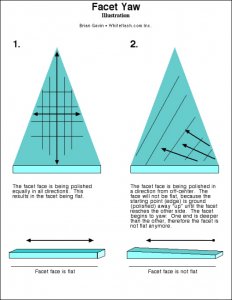
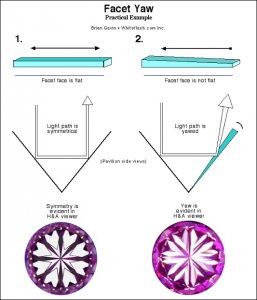
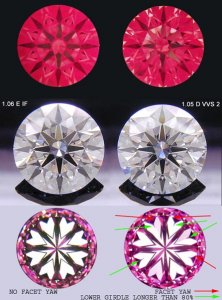
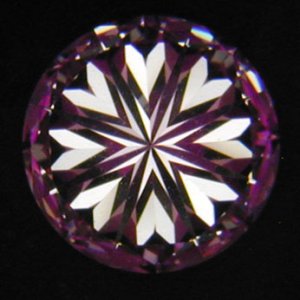
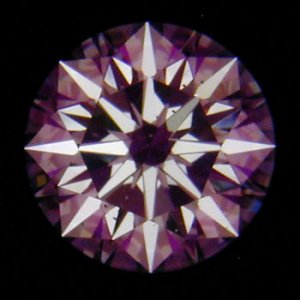


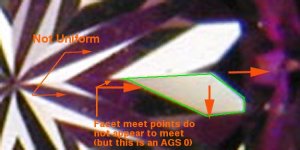
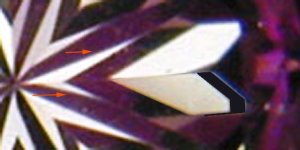
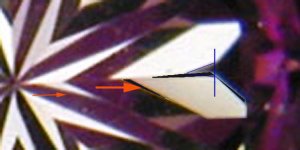
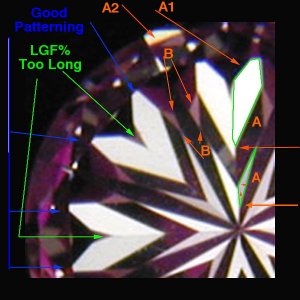
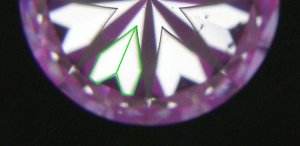

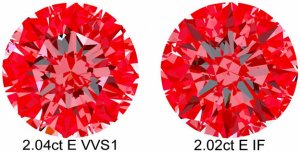

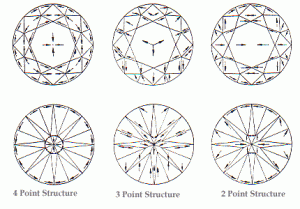

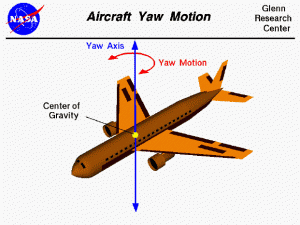


300x240.png)